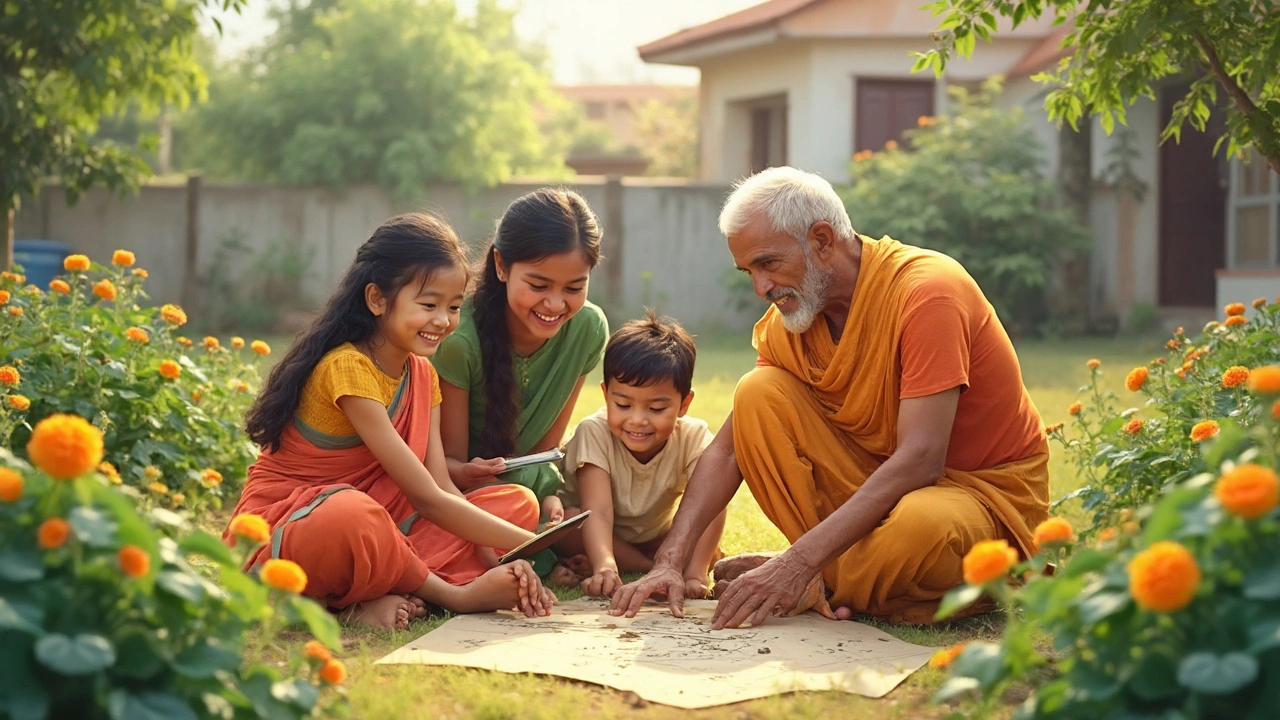Wondering how to start your first kitchen garden? This article breaks down the basics of laying out a garden for beginners, step by step. Learn how to pick the right spot, plan simple beds, choose what to grow, and avoid rookie mistakes. Get practical tips, clever tricks, and easy ideas that actually work, no matter your space or budget. Build a beginner-friendly kitchen garden that will have you harvesting fresh veggies in no time.
Garden Layout: Design Tips for Indian Homes and Balconies
When you think about garden layout, the physical arrangement of plants, paths, and features in a growing space. Also known as landscape planning, it’s not just about making things look nice—it’s about making them work. A good garden layout in India means understanding sun angles, monsoon rains, limited space, and what actually grows without fighting the climate. It’s not the same as designing a garden in the UK or the US. Here, you’re dealing with 40°C summers, short winter windows, and balconies that get baked by afternoon sun. Your layout has to be smart, not just pretty.
One key part of any garden layout, the physical arrangement of plants, paths, and features in a growing space. Also known as landscape planning, it’s not just about making things look nice—it’s about making them work. is balcony garden, a small-scale growing space on a building’s outdoor ledge, common in Indian cities. Also known as container gardening, it’s where most urban gardeners start—and often stay. You can’t just plop a hydrangea on a south-facing balcony and expect it to thrive. You need to know where the sun hits hardest, which pots drain well, and what plants survive wind and heat. That’s why layout matters. Same with drip irrigation, a water delivery system that feeds plants slowly through tubes and emitters. Also known as precision watering, it’s the quiet hero of Indian gardens. If your layout doesn’t include easy access to drip lines, or if you’ve tucked emitters behind pots, they’ll clog, leak, or get stepped on. And if your soil is dense clay? You’re not just fighting weeds—you’re fighting physics. That’s why soil improvement, adding organic or inorganic materials to make soil looser, richer, and more workable. Also known as soil amendment, it’s the foundation of every good layout. matters. No layout survives bad soil.
Then there’s the plants themselves. A layout that includes year-round flowering plants, species that bloom continuously through India’s seasons, from heat to monsoon. Also known as evergreen flowering plants, they’re the backbone of color. isn’t just pretty—it’s practical. If your garden goes bare in winter, you’re losing value. You want plants that bloom when others sleep. That’s why you’ll find zinnias, jasmine, and bougainvillea in smart layouts—not just because they’re beautiful, but because they’re tough. And if rabbits are eating your zinnias? That’s a layout flaw. You need barriers, companion plants, or raised beds. A layout isn’t just a sketch on paper. It’s a system that answers: Where does water go? Where does sun hit? What grows? What gets eaten? What breaks?
What you’ll find below isn’t theory. It’s real fixes from real Indian gardens. How to stop drip emitters from clogging. Which balcony direction gives you the most light. What to mix into clay soil so you can actually dig it. Which flowers bloom nonstop from March to December. You won’t find generic advice here. Just straight-up solutions from people who’ve tried it, failed it, and fixed it—right here in India.
